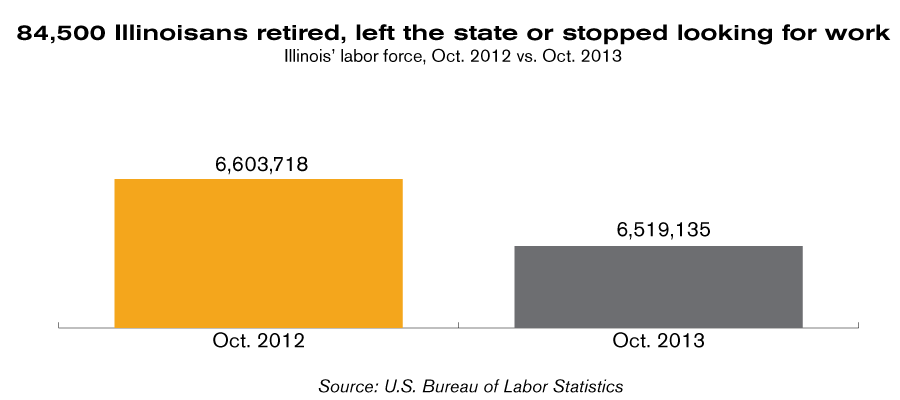Illinois’ unemployment rate dips below 9 percent in October
Illinois’ unemployment rate fell to 8.9 percent in October from 9.2 percent in August, according to the U.S. Bureau of Labor Statistics. A total of 4,800 payroll jobs were created between August and October. Today’s BLS report, which included both October and September numbers, was delayed until today due to the government shutdown in October....
Illinois’ unemployment rate fell to 8.9 percent in October from 9.2 percent in August, according to the U.S. Bureau of Labor Statistics. A total of 4,800 payroll jobs were created between August and October. Today’s BLS report, which included both October and September numbers, was delayed until today due to the government shutdown in October.
After spending six months with the second-highest unemployment rate in the nation, Illinois has dropped to the fourth-highest, behind Nevada, Rhode Island and Michigan.
Over the past two months, unemployment experienced an improvement, decreasing by 22,400. A quarter of that drop, however, was not due to workers who found jobs, but rather to workers who left the labor force.
But over the past year, Illinois’ job situation has actually gotten worse. Not only has unemployment increased by several hundred people compared to October 2012, but the labor force has also suffered a major decline. Over the year, the labor force fell by more than 84,500.
Such a decline is worrisome. A shrinking labor force means more and more Illinoisans are giving up on working in the state by retiring early, looking for jobs elsewhere or simply giving up on finding a job.
The smaller the labor force becomes, the harder it will be for the state’s economy to fully recover.
There are still nearly 580,000 unemployed workers in Illinois who are still desperately looking for work.
To restore true prosperity to Illinois, the state must overturn the failed policies it has been following over the past decade and embrace pro-growth and pro-job policies.
Illinois can do that by lowering its corporate income tax rate to encourage business investment, reducing onerous and costly regulations that stifle entrepreneurship, and passing labor reforms to make Illinois a more attractive businesses destination.
Enacting these polices would go a long way toward restoring jobs and getting Illinoisans to rejoin the labor force.

